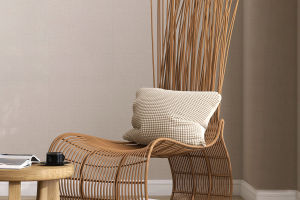Formaldehyde, a colorless and pungent-smelling gas, is a common chemical used in the production of various household products, including textiles.
Fabrics, such as those used for sofas, can sometimes contain formaldehyde, which poses potential health risks to humans.
Textile products are extremely versatile in our daily life and work.
You and your family and children wear clothes, pants, towels, bed quilts, sheets, and curtains hanging on the wall are basically textile products.
We often hear or own that formaldehyde exceeds the standard at home, some of which may be excessive formaldehyde is textile products.
So, how many classes of formaldehyde content of fabric sofa fabric?
Fabric sofa fabric formaldehyde content is divided into class A, class B, and class C, in professional terms, it is called the basic safety technical requirements for textile products.
Class A textile fabrics with formaldehyde content ≤ 20mg/kg;
Class B textile fabrics with formaldehyde content ≤ 75mg/kg;
Class C textile fabrics formaldehyde content ≤ 300mg/kg.
Textile products for infants and young children should meet the requirements of Category A. Products in direct contact with the skin should at least meet the requirements of Category B; products not in direct contact with the skin should at least meet the requirements of Category C.
Formaldehyde is considered a carcinogen and has been linked to respiratory problems, skin allergies, and even cancer.
Prolonged exposure to high levels of formaldehyde in fabrics can have serious health consequences.
By carefully evaluating and categorizing fabric sofas based on their formaldehyde levels, consumers can make informed choices and opt for products that meet their safety requirements.
This classification process holds manufacturers accountable for the quality and safety of their products, ultimately benefiting the consumers who can select sofas with lower formaldehyde levels.
Moreover, classifying formaldehyde levels in fabric sofas aids in improving indoor air quality.
Formaldehyde emissions from fabrics can accumulate indoors, leading to poor air quality and potentially causing "sick building syndrome." This condition can result in symptoms like headaches, dizziness, and respiratory issues.
By choosing fabric sofas with lower formaldehyde levels, homeowners can create healthier indoor environments and reduce the risk of respiratory problems for themselves and their families.
Textile products used in family life, such as clothing, bedding, curtains, etc., are free of formaldehyde if they are soaked in water for 2 hours before use and then washed 2 to 3 times.
When buying sofas, mattresses, and soft beds, you should ask the sales hair for the inspection and testing reports of the fabrics to see if the formaldehyde exceeds the standard.


